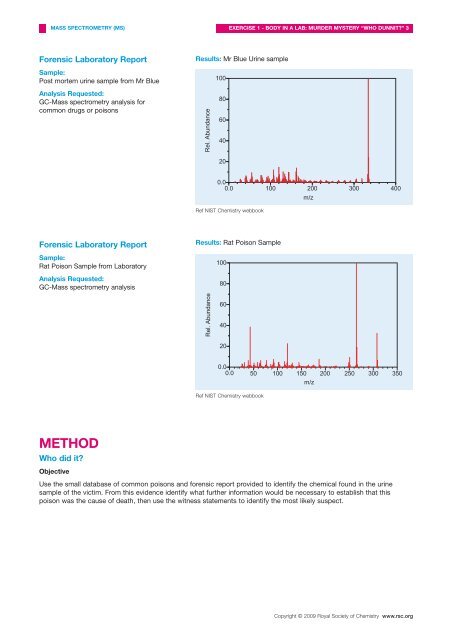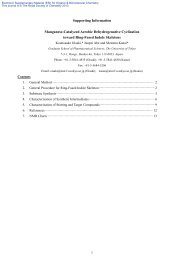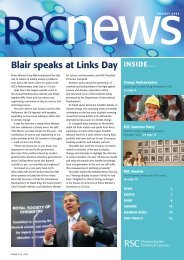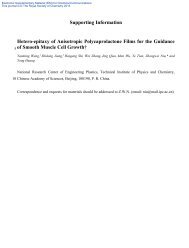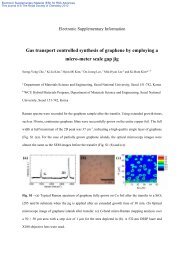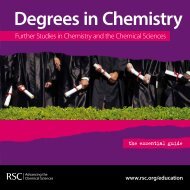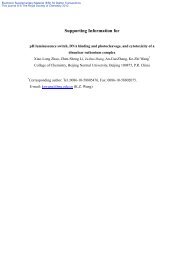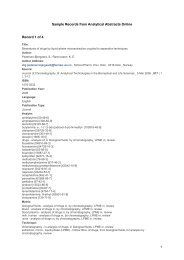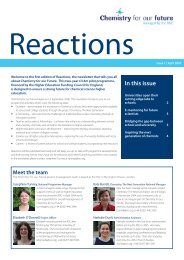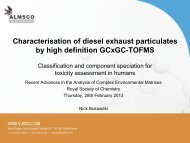Spectroscopy in a Suitcase - Royal Society of Chemistry
Spectroscopy in a Suitcase - Royal Society of Chemistry
Spectroscopy in a Suitcase - Royal Society of Chemistry
Create successful ePaper yourself
Turn your PDF publications into a flip-book with our unique Google optimized e-Paper software.
MASS SPECTROMETRY (MS)<br />
EXERCISE 1 - BODY IN A LAB: MURDER MYSTERY “WHO DUNNIT?” 3<br />
Forensic Laboratory Report<br />
Sample:<br />
Post mortem ur<strong>in</strong>e sample from Mr Blue<br />
Analysis Requested:<br />
GC-Mass spectrometry analysis for<br />
common drugs or poisons<br />
Results: Mr Blue Ur<strong>in</strong>e sample<br />
100<br />
80<br />
60<br />
40<br />
20<br />
0.0<br />
0.0 100 200 300 400<br />
Ref NIST <strong>Chemistry</strong> webbook<br />
m/z<br />
Forensic Laboratory Report<br />
Sample:<br />
Rat Poison Sample from Laboratory<br />
Analysis Requested:<br />
GC-Mass spectrometry analysis<br />
Results: Rat Poison Sample<br />
100<br />
80<br />
60<br />
40<br />
20<br />
0.0<br />
0.0 50 100 150 200 250 300 350<br />
m/z<br />
Ref NIST <strong>Chemistry</strong> webbook<br />
METHOD<br />
Who did it?<br />
Objective<br />
Use the small database <strong>of</strong> common poisons and forensic report provided to identify the chemical found <strong>in</strong> the ur<strong>in</strong>e<br />
sample <strong>of</strong> the victim. From this evidence identify what further <strong>in</strong>formation would be necessary to establish that this<br />
poison was the cause <strong>of</strong> death, then use the witness statements to identify the most likely suspect.<br />
Copyright © 2009 <strong>Royal</strong> <strong>Society</strong> <strong>of</strong> <strong>Chemistry</strong> www.rsc.org


